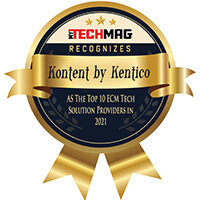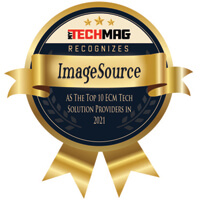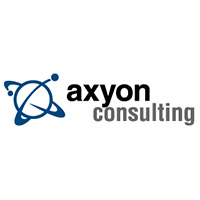It’s critical to have a spot where all of this business-related stuff can be stored, categorized, and rapidly accessed as firms grow from a few-person startup to one that’s larger and more sophisticated. Furthermore, the essential processes must be in place to ensure that all of this content is correctly managed.
Why because, by 2025, the volume of information created each day in the world will have climbed to 463 exabytes, with the vast majority of this data being unstructured. There will be chaos if an organization does not have a centralized repository and does not have the proper protocols in place.
This is when ECM is coming into action.
What is ECM?
ECM (Enterprise Content Management) is the systematic gathering and organizing of information for a specific audience – business leaders, customers, and so on. It’s a dynamic blend of strategies, methods, and tools for capturing, managing, storing, preserving, and delivering data to its employees, business stakeholders, and customers in the process of supporting critical organizational processes throughout its lifecycle.
As new types of content have been introduced to the business, ECM has evolved swiftly. These solutions, on the other hand, continue to emphasize digitally managing a company’s data in a centralized repository and employing digital content to support business operations and goals.
Why is ECM Beneficial?
The demand for business content management is expanding swiftly.
“According to Market Research Future, not only is the ECM industry predicted to grow at a compound annual growth rate (CAGR) of 16.8 percent, but it has also attained a worth of over $76 billion.”
To put it clearly, these remarkable data and statistics would not exist if organizations did not realize the value of investing in content management strategies, methodologies, and technologies. As a result, ECM provides a plethora of advantages for efficient and profitable enterprises all over the world.
The following are some of the advantages of enterprise content management:
-
Content, Information, and Document Centralization
One of the key issues modern organizations face is that they don’t use business tools to manage the massive amounts of content they produce every day — everything from brand logos to spreadsheets with the most up-to-date marketing analytics. But, with ECM, this pain point becomes, simply, soothing. Content that is absolutely required can be stored in a central repository that personnel can access at any time to retrieve the content they seek.
-
Increased Productivity
An ECM system will organize documents effectively, making them easier to access and, as a result, saving you time. As a result, you will be able to boost your productivity by reallocating your time to more important duties. Also, having all your data and records in one location automatically leads to greater productivity across the board.
-
Enhanced Accessibility
With ECM, you can store all of your firm’s digital business content in one centralized digital place. This might be your company’s intranet or a cloud-based solution, but personnel can access this central spot from a variety of devices in any instance.
-
Boosted Collaboration
When you effectively manage your firm’s content, your employees will be able to collaborate like pros. They can post content rapidly, see what others are working on promptly, and jump right in to make any necessary edits, revisions, or modifications. ECM can assist colleagues in achieving the decade’s best collaboration.
-
Minimized Organizational Risk
It’s critical to keep your business-related stuff safe and secure when it comes to maintaining it. This is, however, easier said than done. It’s more prevalent than ever before to lose sight and track of key business content, thanks to the proliferation of bringing numerous devices to work, working remotely, and even fully remote teams.
-
Finer Business Processes
It’s all well and good to deploy enterprise content management, but without adding new relevant processes, remapping existing processes, and optimizing them, ECM will fail miserably. You will improve the way people interact with business content by redefining business processes.
What Can ECM Tools Do For You?
- The Capture component entails converting paper documents to electronic formats, acquiring and organizing electronic data into a cohesive framework, and organizing information. Content such as invoices, contracts, and research reports are examples of such information.
- The Manage component uses document management, collaboration software, web content management, and records management to link, modify, and employ information.
- The Store component backs up regularly changing information in a configurable folder structure in the short term so that users can access or modify it.
- The Preserve component, which is commonly performed through records management capabilities, backs up infrequently changing data in the medium and long term. It’s frequently utilized to assist businesses in complying with government and other standards.
- The Deliver component offers desired information to clients and end-users.
Wrapping Up!
In this article, we hope you have learned everything there is to know about ECM and how it can assist you with all of your enterprise content management requirements. Every business is unique. Perhaps you would want to manage the content of your business with an all-in-one ECM tool.







